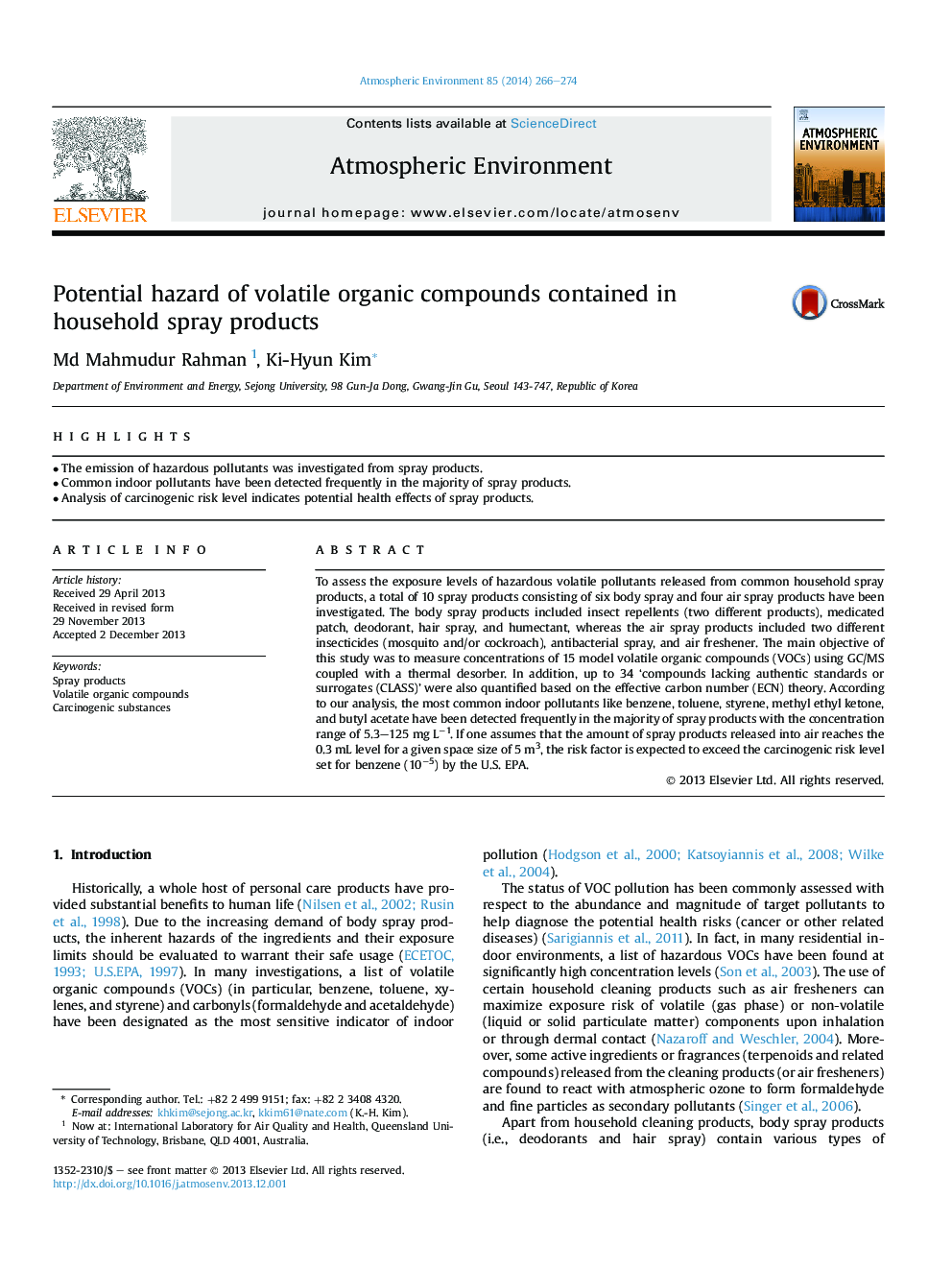| Article ID | Journal | Published Year | Pages | File Type |
|---|---|---|---|---|
| 6341037 | Atmospheric Environment | 2014 | 9 Pages |
â¢The emission of hazardous pollutants was investigated from spray products.â¢Common indoor pollutants have been detected frequently in the majority of spray products.â¢Analysis of carcinogenic risk level indicates potential health effects of spray products.
To assess the exposure levels of hazardous volatile pollutants released from common household spray products, a total of 10 spray products consisting of six body spray and four air spray products have been investigated. The body spray products included insect repellents (two different products), medicated patch, deodorant, hair spray, and humectant, whereas the air spray products included two different insecticides (mosquito and/or cockroach), antibacterial spray, and air freshener. The main objective of this study was to measure concentrations of 15 model volatile organic compounds (VOCs) using GC/MS coupled with a thermal desorber. In addition, up to 34 'compounds lacking authentic standards or surrogates (CLASS)' were also quantified based on the effective carbon number (ECN) theory. According to our analysis, the most common indoor pollutants like benzene, toluene, styrene, methyl ethyl ketone, and butyl acetate have been detected frequently in the majority of spray products with the concentration range of 5.3-125 mg Lâ1. If one assumes that the amount of spray products released into air reaches the 0.3 mL level for a given space size of 5 m3, the risk factor is expected to exceed the carcinogenic risk level set for benzene (10â5) by the U.S. EPA.
